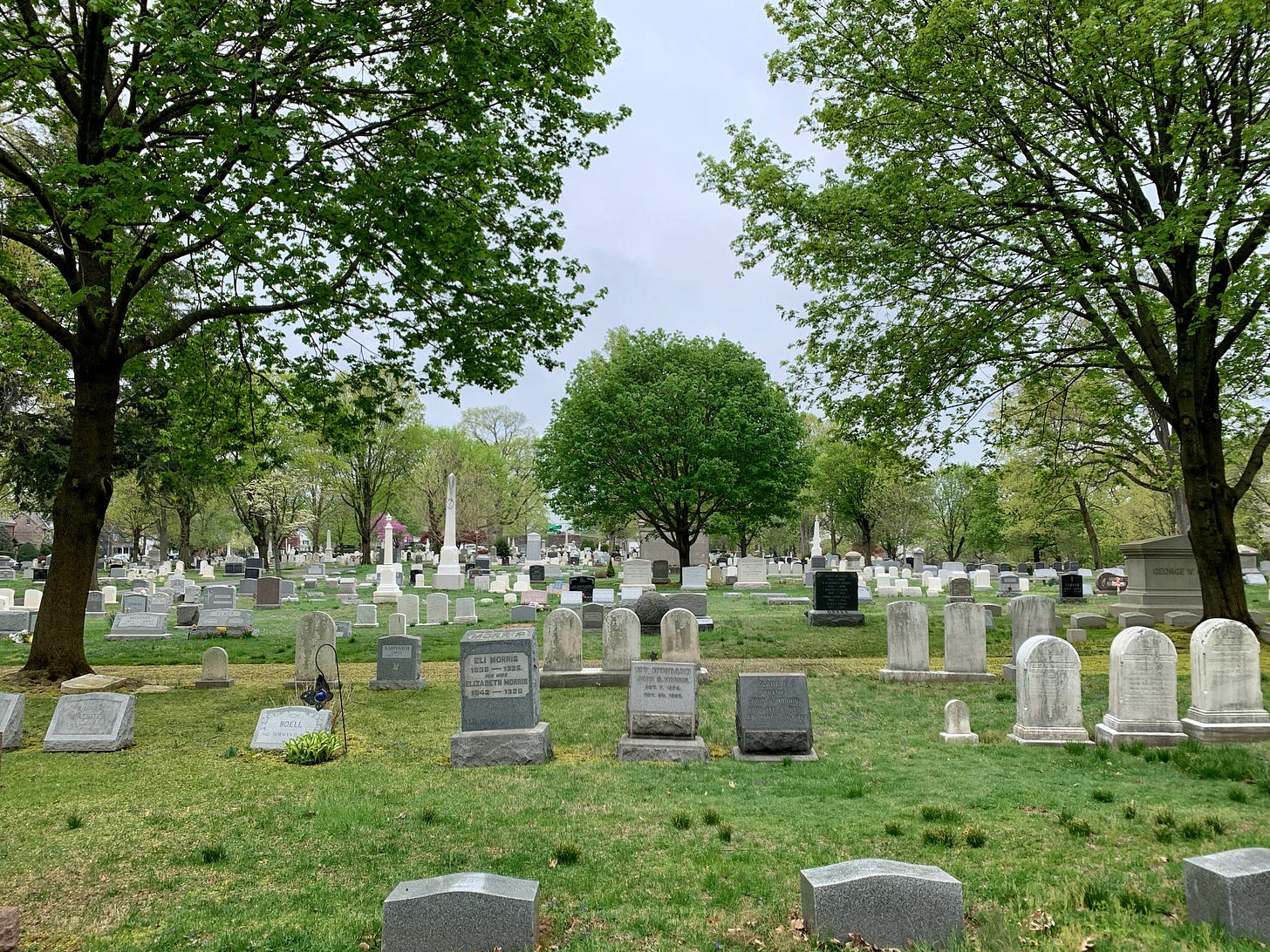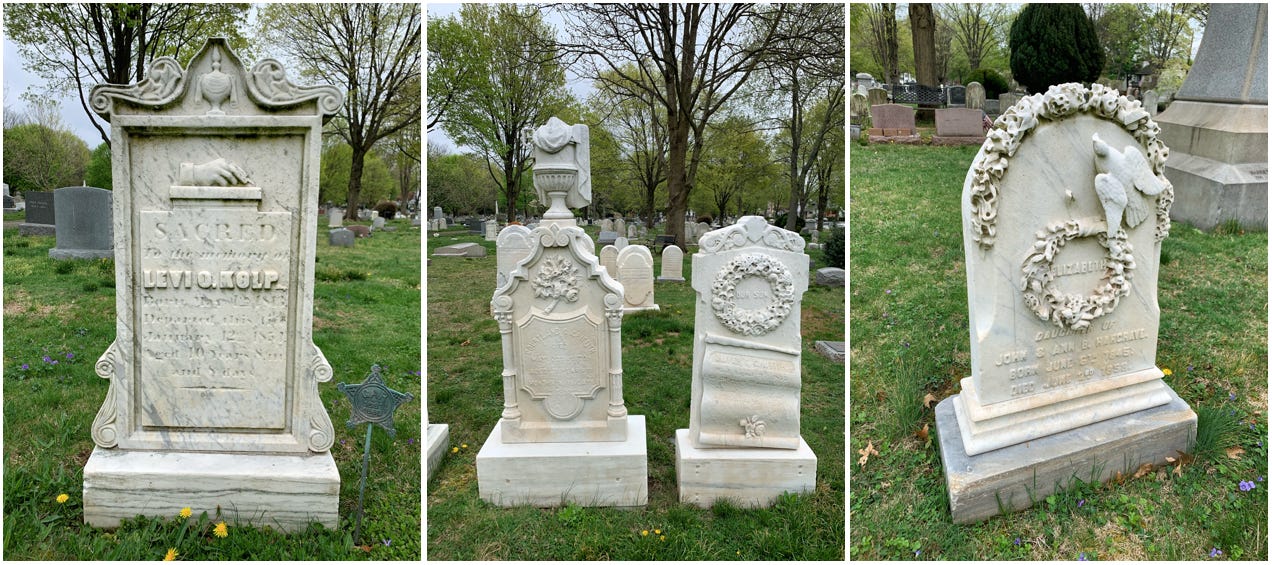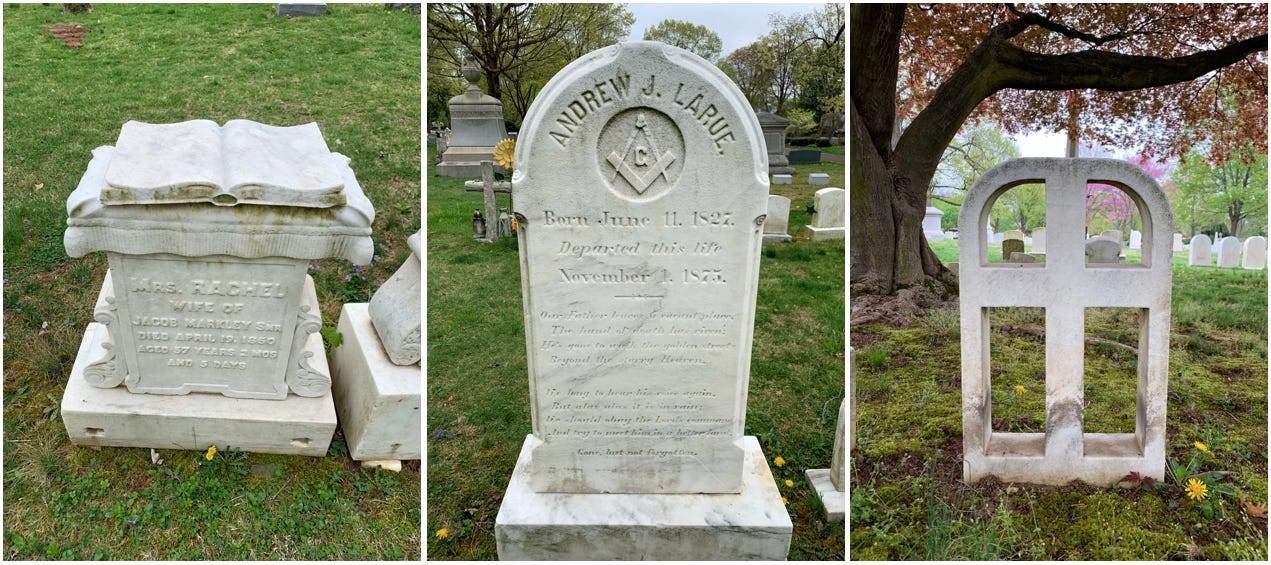Sunday Pastries With the Dead 22
Exploration part 1 of circa-1849 Doylestown Cemetery in Doylestown, PA.
Today’s graveyard is so large, I had to split its coverage up into two posts—for this first installment, I’m highlighting the many interesting headstone symbols I found. Next week, I’ll detail the notable people interred within.
This beautiful 33-acre burial ground in Pennsylvania was established in 1849, boasts about 12,500 graves, and is situated just outside a popular town known for its historical buildings and museums.
The grounds are park-like and meticulously maintained—as I wove through, I admired colorful spring flowers sprouting among the stones and passed locals strolling its paved pathways with dogs and kids in tow. The interred seemed very content—the place has a distinct small-town-on-July 4th feel. Almost as if the dead are picnicking among the graves gossiping, giggling, and clinking punch glasses.
The headstone symbology (especially the carvings) is incredible here. Lambs are quite common to mark the graves of those who died young, and I happened upon several very intricate, beautifully preserved examples.
I also encountered more instances of combined symbols on one stone than I’ve seen anywhere else. On the left we see ivy (immortality, everlasting love) flanking an urn (the mortal body being reduced down as the soul ascends) and a hand holding a quill pen (a life cut short; a book not fully written). In the center is two columns (a noble life) beneath a draped urn (the veil between life and death) and a bouquet featuring lilies (a return to purity in the afterlife) and roses (virtue, beauty). Beside it is a stone with a wreath (eternal memory and immortality), a scroll (our lives being recorded in heaven), and a rose. On the right is a wreath with a really gorgeous carved dove (innocence and peace) overlaid atop it.
The obelisk on the left features a lamb, a wreath, and a hand pointing up (showing where the soul went after death). In the center is a stone with three linked chains that have FLT (friendship, love, and truth) inside them, standing for the Odd Fellows Society—beneath them is a hand with a heart in its palm (charity and generosity), which often accompanies the Society’s chain symbolism. On the right is a hand pointing up beneath a garland of roses.
John Thornton’s grave isn’t just notable for its nod to a certain stormily romantic cotton mill owner (where are my Elizabeth Gaskell fans at?!); it also bears a bundle of wheat (indicating a long life, or a life well-lived). In the center is a mournful monument to five children from the same family that features a lily of the valley sprig (innocence, purity, rebirth, renewal); there’s a bloom to represent each child. On the right is a pretty example of a calla lily (purity, holiness).
The Stuckert obelisk is topped with a magnificent angel carving; she’s holding flowers, which stands for life’s fleeting quality. On Elizabeth Cleaver’s grave, an angel flies carrying a mortal child, signifying the deceased’s ascent to heaven.
And last but not least, a few disparate but interesting items. Mrs. Rachel Markley’s open book means a life cut short before the last page was reached. Andrew LaRue’s compass and square with a G (standing for the Greek “gnosis” or “knowledge”) in the center shows he was a member of the Freemasons. And Ellen Phipps Ross’s incredible cutout stone was a real fascination for me—yes, the shape made within is a cross, but I like to think of it as a window. I’ve never seen the design before!
I’ll meet you here next Sunday for part two, fellow taphophiles!











